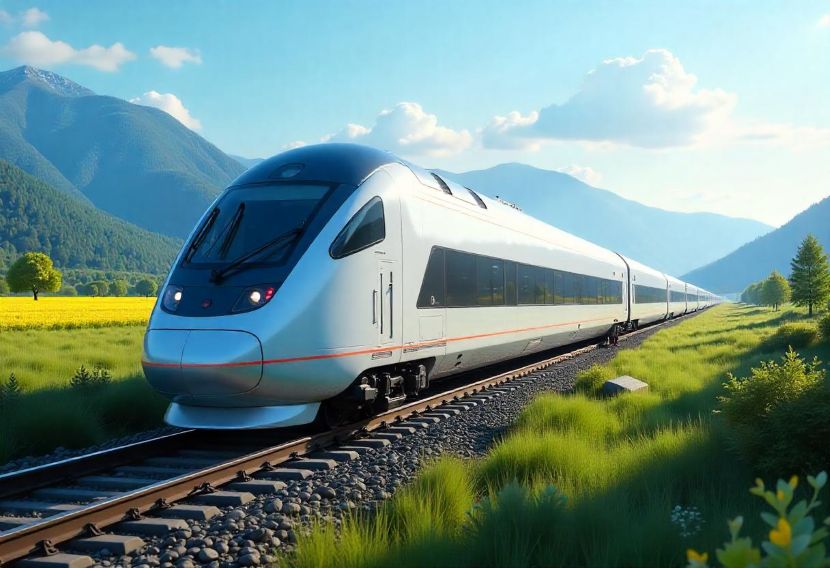U.S. Rail Transport Embraces Hydrogen Technology: How It’s Changing Travel and Business
The evolution of transportation is ever-pressing, particularly in an era marked by climate concerns and sustainable practices. Amidst this backdrop, U.S. rail transport is making significant strides with the introduction of hydrogen-powered trains, fundamentally transforming travel and commerce across the country. As these trains find their place in the American landscape, several critical factors contribute to their integration, including infrastructure adaptations, safety protocols, and potential economic impacts.
Transitioning to Hydrogen: The Case for Purpose-Built Infrastructure
Hydrogen fuel offers a greener alternative to traditional diesel engines but brings with it a unique set of challenges. Unlike diesel, hydrogen requires specialized handling and infrastructure. Martin Schroeder from Jacobs highlights that the flammability of hydrogen necessitates significant upgrades to facilities, such as tunnels and refueling stations.
The San Bernardino County Transportation Authority (SBCTA) is paving the way for hydrogen rail usage in the U.S. Their FLIRT H2 hydrogen fuel train, set to enter service in August 2025, exemplifies this transition. SBCTA has heavily invested in constructing purpose-built facilities equipped with advanced safety features, including deflagration panels and automatic shut-off systems. Joy Buenaflor, a representative from SBCTA, emphasizes the project’s comprehensive nature, which extends beyond simply introducing eco-friendly trains to rethinking safety protocols and staff training.
Hydrogen Train Safety: Tunnel and Emergency Preparation Focus
Safety is paramount in the operation of hydrogen-powered trains, especially regarding tunnel infrastructure. The properties of hydrogen differ significantly from those of diesel, necessitating thorough emergency preparedness protocols to address potential leaks in enclosed environments. The overall design of airflow simulations within tunnels has become a vital component of ensuring safe hydrogen dispersion.
Moreover, collaboration with local fire departments is essential to equip responders with the knowledge required in emergencies involving hydrogen trains. It’s crucial to note that hydrogen trains are not fundamentally riskier than other types of trains; however, emergency protocols must be adapted for optimal response. Marcin Taraszkiewicz from HDR stresses the importance of training first responders to ensure they are well-versed in handling specific challenges posed by hydrogen technology, facilitating quick and effective action during emergencies.
Business and Travel Impact: What Hydrogen Trains Will Mean to the U.S. Rail Industry
The shift to hydrogen trains holds vast implications for the U.S. rail industry. As more companies commit to sustainability efforts, hydrogen trains represent a viable alternative for corporate travelers seeking eco-friendly transport options. The green credential of hydrogen-powered travel may very well influence business calendars in the future.
For the tourism sector, hydrogen trains could emerge as a preferable alternative to airplanes, especially for long-distance journeys. The environmental benefits of hydrogen travel are likely to attract tourists looking for sustainable options, which could lead to additional train routes connecting various regions in an eco-friendly manner.
Nevertheless, the rollout of hydrogen trains is a gradual process. The necessary infrastructure, such as refueling and maintenance stations, is still being developed. Travelers should remain informed about service schedules for hydrogen trains as they are tested and integrated into the existing rail system.
Fast Facts and Travelers’ Guide to Hydrogen-Fueled Rail
Stay Up to Date on New Routes
As hydrogen trains are phased into service, keeping informed about new routes and services provided by railway operators will be essential. It could take several years for hydrogen trains to become a common sight on major routes.
Support Sustainable Travel
Opting for hydrogen-powered trains is a step towards reducing your carbon footprint. When feasible, choose this greener mode of transport for your long-distance travel.
Be Prepared for Travel Infrastructure Upgrades
As the rail industry evolves in its transition to hydrogen technology, expect increased construction and upgrades to existing stations and infrastructure.
Stay Current on Safety Precautions
Hydrogen trains are designed to be safe for passengers. Ongoing training and updated emergency procedures will ensure a secure travel experience.
Consider Travel by Train for Business
For business travelers, hydrogen trains provide an environmentally responsible way to journey between cities, aligning corporate travel plans with sustainability goals.
Toward the Green Future of U.S. Rail Travel
The adoption of hydrogen trains marks a significant advancement for U.S. railroads, representing a future where sustainability is at the forefront of transport solutions. While substantial investments are required for infrastructure and training, the positive implications for both the environment and the tourism industry are promising. Secure in the knowledge that U.S. train travel is on the brink of a revolutionary shift, travelers and businesses alike can look forward to embracing a cleaner, more efficient way to navigate the country. Hydrogen-powered trains herald a new chapter in American travel, blending innovation with environmental responsibility.


